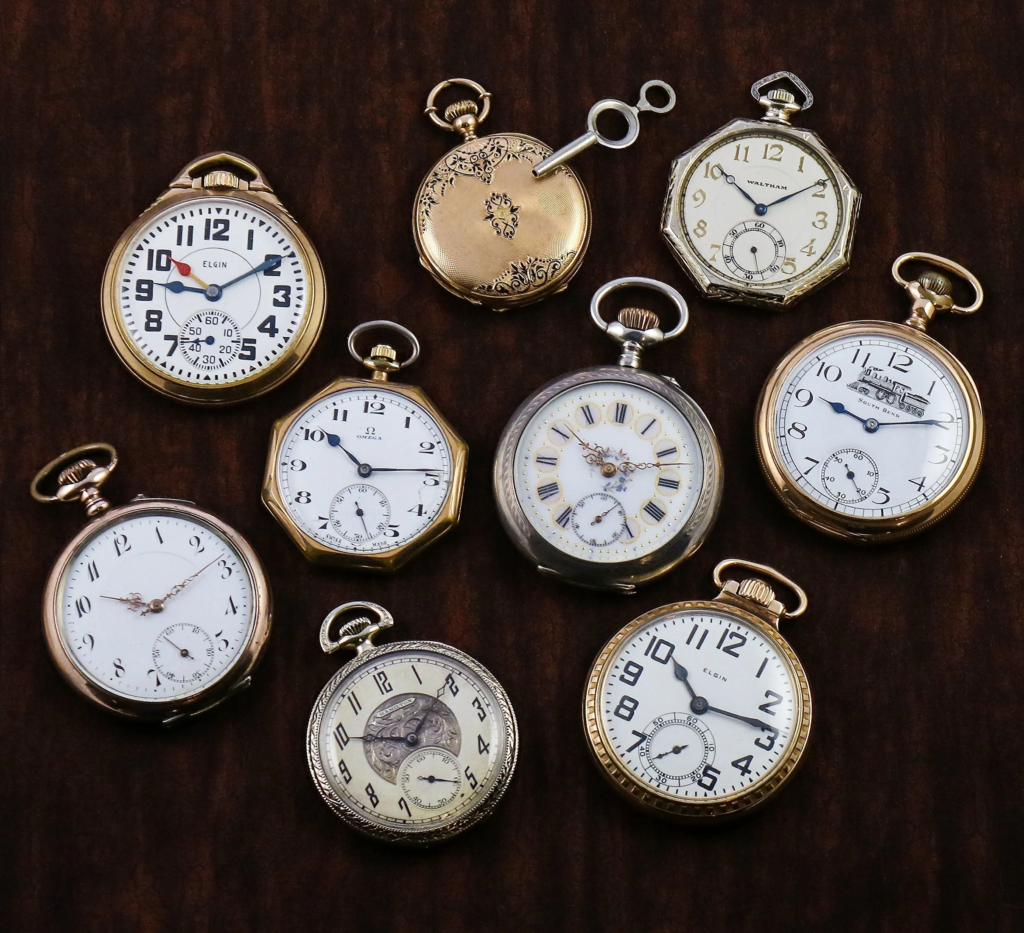The evolution of watches, a pivotal element in watchmaking history, traces back to the 15th century when portable spring-driven clocks first appeared . German clockmaker Peter Henlein is often lauded as the pioneer of the watch, marking a significant milestone in the journey of timekeeping through innovation.
The term itself, ‘watch‘, is believed to have originated from the Old English word ‘woecce’, which translates to ‘watchman’, underscoring the device’s initial purpose in keeping time . With the invention of mechanical clocks in the 14th century, Europe set the stage for the development of timepieces that would later evolve into the watches we are familiar with today.
Key takeaways(summary)
- Omega’s Contributions to Watchmaking:
- Founded in 1848, Omega has been at the forefront of watchmaking innovation, including the creation of the world’s first diver’s watch and the Speedmaster’s significant role in space exploration.
- The brand introduced the co-axial escapement, which significantly reduces friction between components, leading to greater precision and reduced maintenance for watches.
- Omega has also been a leader in adopting innovative materials like titanium, ceramic, and proprietary alloys such as Sedna™ gold, further enhancing the durability and aesthetic appeal of their timepieces.
- In 2013, Omega created the first watch movement resistant to magnetic fields greater than 15,000 gauss, showcasing their commitment to precision and reliability under extreme conditions.
- Nostalgia vs. Innovation in Watchmaking:
- The watch industry currently faces a tension between nostalgia for the “good ol’ days” and the drive for innovation, with some brands leveraging historical designs and others pushing the boundaries of technology and materials.
- Nostalgia can evoke a range of sentiments, from disinterest to disdain for modern aesthetics and principles, posing a challenge for brands as they navigate the balance between tradition and innovation.
- The backlash against Audemars Piguet’s Code 11.59 underscores the importance of expectation management and the delicate balance between a brand’s ethos, its future direction, and the preferences of the consumer and collector community.
- Strategies for Balancing Tradition and Innovation:
- Brands must carefully manage framing and expectations to effectively navigate the tension between nostalgia and the desire for innovation, ensuring that new releases are perceived as evolutions rather than transgressions of the brand’s heritage.
- Nostalgia can serve as a form of checks and balances, setting a high bar for what is considered a successful and admirable modern watch, while also compelling brands to innovate within the constraints of their established identity.
The Dawn of Timekeeping: From Sundials to Clock-Watches
- The Genesis of Timekeeping Devices
- Sundials: Introduced by ancient Egyptians around 1500 BC, these devices indicated time through shadows cast by the sun.

- Water Clocks: Originating around 1400 BC, these utilized water flow for measuring time and found utility in various public places across centuries.

- Mechanical Clocks: The advent of mechanical clocks in Europe during the 13th or 14th century marked a significant leap, employing weights and pendulums for time regulation.

- Evolution to Portability
- Spring-Driven Clocks: The 15th century witnessed the emergence of spring-driven clocks in Italy and Germany, paving the way for portable timekeeping.

- Clock-Watches: By the 16th century, Germany’s Peter Henlein crafted the first portable timepieces, known as clock-watches, introducing a new era of timekeeping.

- Spring-Driven Clocks: The 15th century witnessed the emergence of spring-driven clocks in Italy and Germany, paving the way for portable timekeeping.
- Technological Advancements in Accuracy
- 1657: Introduction of the balance spring, enhancing watch accuracy significantly.
- Late 17th Century: Replacement of the verge escapement with the cylinder escapement.
- 1754: Invention of the lever escapement, widely adopted in the early 19th century.
- 1765: The bimetallic temperature-compensated balance wheel was invented, further improving the precision of watches.
The Rise of the Pocket Watch

The initial emergence of pocket watches in the 16th century marked a significant advancement in personal timekeeping. Initially, these timepieces were large, transitioning in size between clocks and watches, and often worn around the neck like the ‘Nuremberg eggs’.
However, by the 17th century, a shift occurred with men beginning to carry watches in their pockets, a practice that reflected both convenience and the evolving fashion of the times. This period also saw Peter Henlein, a German watchmaker, significantly contributing to the development and popularity of pocket watches.
- Evolution of Design and Functionality: Early pocket watches were mainspring powered and lacked a protective glass screen, evolving from large, drum-shaped brass cylinders to smaller, flatter shapes to better fit in pockets. By the late 17th century, minute hands and jeweled bearings were introduced, enhancing accuracy and durability.
- Accessibility and Widespread Use: Initially a symbol of wealth among the upper class, the Industrial Revolution democratized the pocket watch. Mass production techniques made these timepieces accessible to the middle and lower classes, with the working class, especially railroad workers, relying on them for precise timekeeping. Stringent standards were adopted in 1893 for pocket watches used in railroading, requiring features like open-faced designs and a minimum of 17 jewels.
- Styles of Pocket Watches: There are two main styles of pocket watches: the hunter-case pocket watch, featuring a spring-hinged circular metal lid to protect the crystal, and the open-face pocket watch, which lacks a metal cover. Pocket watches were generally attached to a chain or mounted on a short leather strap or fob, facilitating secure and convenient carrying.
Invention of the Wristwatch

- Early Adoption by Women and Military Use
- Initially, wristwatches were predominantly worn by women, regarded more as a fashion accessory than a practical timekeeping device.
- Their practical utility was recognized during military campaigns in the 19th century, where men used wristwatches for synchronizing maneuvers and coordinating troop movements, marking the beginning of the wristwatch’s evolution into a tool of precision and efficiency.
- Key Milestones in Wristwatch Development
- The journey of the wristwatch into mainstream acceptance began with Patek Philippe creating the first Swiss wristwatch in 1868, followed by the significant shift during World War I, where the practicality of wristwatches over pocket watches was realized by soldiers modifying pocket watches to wear them on their wrists.
- Notable developments include the creation of the Cartier Santos-Dumont in 1904, designed for pilot Alberto Santos Dumont, and the invention of the first wristwatch by Abraham-Louis Breguet in 1810 for Queen Caroline Murat of Naples, showcasing the wristwatch’s transition from a piece of jewelry to an indispensable tool.
- Evolution and Acceptance
- Despite initial skepticism, wristwatches gained popularity, spurred by their adoption in women’s fashion and the pragmatic use during World War I by men.
- The early 20th century saw a shift in perception, with wristwatches being recognized for their utility in battle, leading to widespread acceptance and use among men, further cemented by the invention of quartz watches in the 1950s which revolutionized the watchmaking industry.
The Quartz Revolution

The advent of the quartz watch in the 1960s heralded a new era in watchmaking, often referred to as the Quartz Revolution. This period saw a significant shift in the industry, marked by several key developments:
- Introduction of Quartz Watches: The Quartz Revolution commenced with the debut of the Seiko Astron in 1969, the world’s first quartz wristwatch. This innovation introduced unparalleled accuracy and affordability in timekeeping, propelling the popularity of quartz watches in the 1980s.
- Impact on Swiss Watch Industry: The Swiss watch industry faced a substantial downturn due to the quartz crisis, with the number of Swiss watchmakers plummeting from 1,600 to 600 between 1970 and 1983. Employment in this sector also saw a drastic reduction from 90,000 to 28,000 within the same period.
- Revival and Transformation:
- Swatch Group Formation: In response to the crisis, the Swatch Group was established through the merger of ASUAG and SSIH in 1983, playing a pivotal role in rejuvenating the Swiss watch industry.
- Redefining Luxury: The quartz revolution compelled Swiss manufacturers to pivot towards the high-end market, transforming mechanical watches into luxury items.
- Rolex’s Adaptation: Rolex was among the Swiss watchmakers who embraced quartz technology, releasing the reference 5100 with an in-house quartz movement in 1970.
This transition not only democratized watch ownership by significantly reducing prices but also underscored the enduring dominance of quartz technology, with 97% of watches produced in 2015 being quartz-based.
Innovations in Modern Watchmaking

Innovations in modern watchmaking have significantly diversified the landscape of timekeeping devices, introducing a blend of technological advancements and enhanced material usage that cater to both functionality and aesthetic appeal.
- Technological Innovations:
- The introduction of smartwatches in the 2010s revolutionized the watch industry by integrating timekeeping with computer-like capabilities, marking a significant leap from traditional mechanical watches.
- Innovations such as the TAG Heuer Carrera Plasma, featuring 11.7 carats of lab-grown diamonds and a dial made of polycrystalline diamond, showcase the blend of luxury with cutting-edge technology.
- Advances in digital timekeeping are exemplified by the Apple Watch Series 3, which includes health monitoring and altimeter functions, illustrating the expansion of watch functionalities beyond mere timekeeping.
- Material Advancements:
- The use of carbon fiber, known for its strength and lightweight properties, underscores the industry’s move towards materials that offer durability without compromising on design, especially in sports and luxury watches.
- Ceramic‘s popularity in watchmaking is on the rise due to its scratch resistance, longevity, and resistance to fading, corrosion, and thermal fluctuations, making it an ideal material for timepieces designed for longevity.
- Titanium‘s high strength-to-weight ratio is increasingly sought after for watch construction, offering superior durability and scratch resistance, a testament to the industry’s commitment to combining aesthetics with functionality.
These innovations reflect the watchmaking industry’s continuous evolution, where the integration of new technologies and materials enhances both the utility and desirability of watches, catering to a wide range of consumer preferences and needs.
Conclusion
Throughout the expansive journey of watchmaking history, we have witnessed an incredible continuum of innovation, from the advent of spring-driven clocks to the sophistication of contemporary smartwatches.
The chronicle of timekeeping has been characterized by significant milestones, such as the creation of the pocket watch, the revolutionary emergence of the quartz movement, and the modern era’s embrace of smart technology and advanced materials.
These developments not only reflect the industry’s adeptness at blending functionality with aesthetic appeal but also underscore the pivotal role of watches in the tapestry of human history.
By revisiting the contributions of pioneers like Peter Henlein, Omega, and technological innovations such as the co-axial escapement and advanced materials, we grasp the essence and implications of watchmaking’s evolution.
As we stand at the crossroads of nostalgia and forward-thinking innovation, it becomes evident that watchmaking is more than a testament to human ingenuity; it is a mirror reflecting our relationship with time itself. The tension between cherishing historic craftsmanship and embracing the potential of modern technology shapes the future direction of the industry.
With each tick, we’re reminded of the perpetual quest for precision, durability, and elegance, driving watchmakers to continually redefine the boundaries of what a timepiece can be.
Thus, as we wrap up this narrative, we acknowledge not only the advancements that have been made but also the boundless possibilities that lie ahead in the realm of watchmaking, inviting further exploration and appreciation of this timeless craft.
FAQs
What is the origin of watchmaking?
The craft of watchmaking began in Europe during the 16th century, with the evolution of watches from spring-driven portable clocks that first emerged in the 15th century. An example of an early watch is a 16th-century drum watch equipped with a sundial, featuring Roman numerals on the outer band and Hindu-Arabic numerals on the inner band.
How did watch development evolve over time?
The development of watches can be traced back to the 17th century, originating from spring-powered clocks that dated back to the 14th century. Historically, watches were mechanical devices, operated by clockwork. They were powered by winding a mainspring and kept accurate time through the use of an oscillating balance wheel.
Can you explain the history of horology?
Horology, the study and measurement of time, can be dated to around 1450 BC with the Ancient Egyptians. They were the first to observe the earth’s natural circadian rhythms, dividing the day into two 12-hour segments. They also used large obelisks to monitor the movement of the sun throughout the day.
What was the first wristwatch in history?
The first known wristwatch was created in 1810 by Breguet. It was commissioned by the Queen of Naples on June 8th, 1810, leading to the production of the Breguet watch number 2639, which is documented as the first wristwatch ever made.
- The History of Omega: A Journey of Excellence & Precision - March 28, 2024
- What is Cartier known for? - March 25, 2024
- Exploring Innovations and Breakthroughs inWatch Design - March 25, 2024

